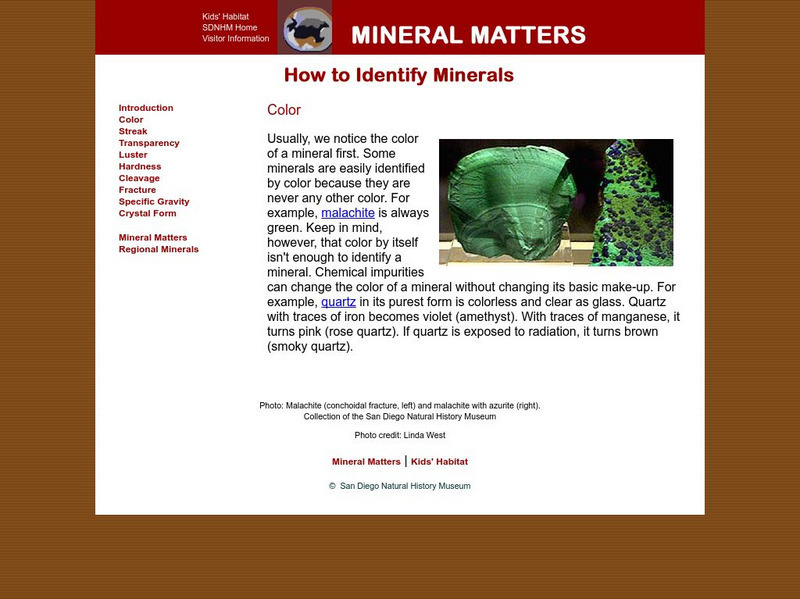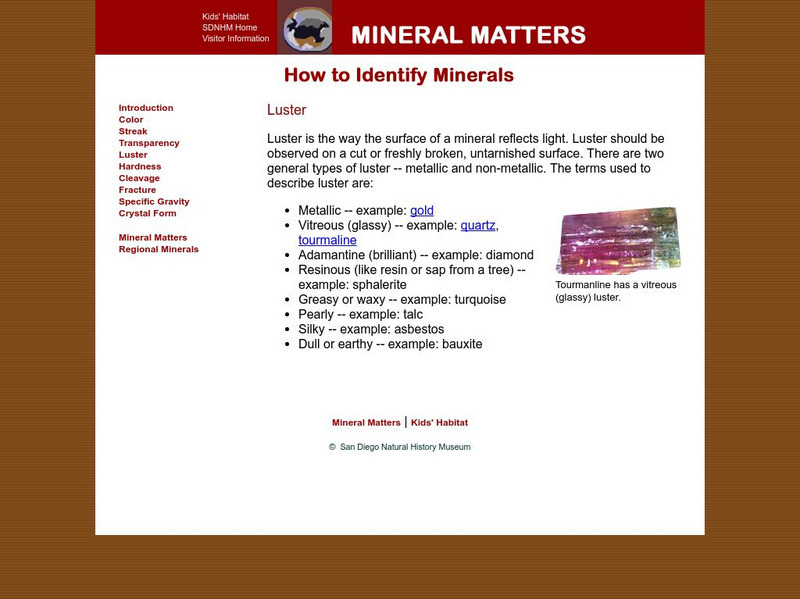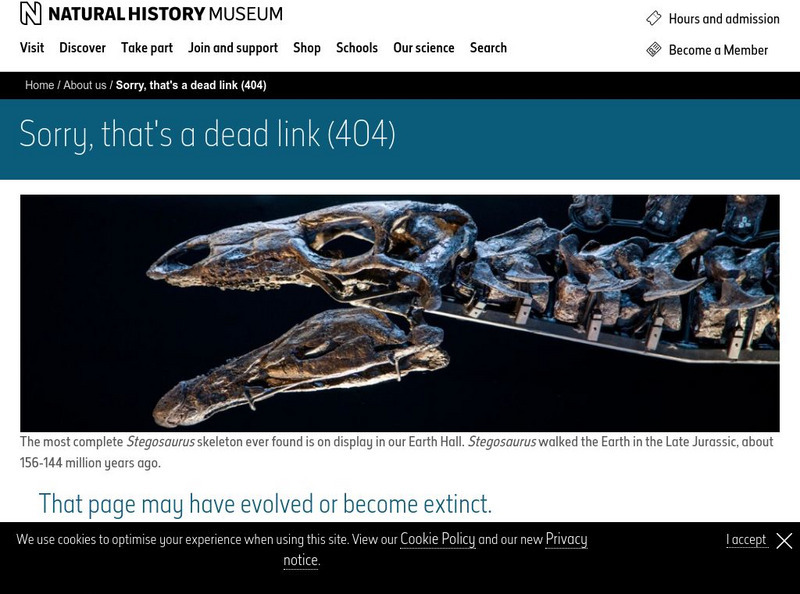American Museum of Natural History
American Museum of Natural History: Trip Up Your Brain
Try this trippy experiment to fool your brain.
American Museum of Natural History
American Museum of Natural History: Crazy Camouflage
Create a flounder fish that's hard to spot. In this hands-on activity, students gather evidence to explore how camouflage helps animals survive.
American Museum of Natural History
American Museum of Natural History: What Is Water?
This comprehensive article provides information about the physical properties of water, the importance of water as an Earth material, the processes and cycles that water undergoes on Earth, its importance to life on Earth, and why we...
American Museum of Natural History
American Museum of Natural History: Grow Rock Candy
Students can carry out an investigation using sugar and water to determine whether heating or cooling a substance may cause changes that can be observed. This activity reinforces the ideas that the properties of materials can change when...
American Museum of Natural History
American Museum of Natural History: Find My Plankton Baby Picture
By observing photos of plankton at different life stages, students can obtain information that will allow them to construct evidence-based accounts of how parents and offspring don't always look alike.
American Museum of Natural History
American Museum of Natural History: Make Your Own Weather Station
Students can plan and carry out investigations of local weather patterns by building their own weather stations to collect observations of various weather conditions: rainfall, wind direction, and air pressure.
American Museum of Natural History
American Museum of Natural History: Map Your World
Students can follow these easy steps to develop a model (drawing) of their room and the things in it. Then they can broaden the drawing to include their entire floor, apartment, or house.
University of Florida
Florida Museum of Natural History: Kitchen Science
This guide focuses on everyday substances and how we can change their properties by adding heat or cold, physically manipulating them, or mixing them together.
University of Florida
Florida Museum of Natural History: Physical Science
This guide focuses on four physical science topics that fascinate children and scientists alike. They are motion, magnets, sound, and light. With your guidance and support, these topics provide children with many opportunities to explore...
University of Florida
Florida Museum of Natural History: Plant Life
This teacher's guide focuses on the fascinating world of plants. Through books and other print materials, and exploration of actual plants, children will identify plants as living things, examine the parts of plants, experiment with what...
University of Florida
Florida Museum of Natural History: Investigating Water
This guide engages children in the process of scientific inquiry using the context of a favorite early childhood pastime-water play.
University of Florida
Florida Museum of Natural History: Animals 1: Fur, Fins, Feathers, and More
This teacher's guide focuses on familiar animals such as mammals, birds, reptiles, amphibians, and fish.
American Museum of Natural History
American Museum of Natural History: Five Tools and Processes for Translating the Ngss Into Instruction and Classroom
The Five Tools and Processes for Translating the NGSS are designed to help professional development leaders work with teachers on curriculum, instruction, and assessment as they achieve this vision. Click the link for each tool for an...
University of Florida
Florida Museum of Natural History: My Body My Senses
This teacher's guide introduces children to the human body and the five senses and covers the major body parts and what they do. Children also will use their five senses to learn about the world.
Other
Everhart Museum (Natural History, Science, and Art)
Located in Scranton, PA. The Everhart Museum has extensive collections with an emphasis on natural history and the visual arts.
San Diego Natural History Museum
San Diego Natural History Museum: Fossil Field Guide: Scallop
Brief look at fossil evidence that reveals the life and ecological interactions of the extinct scallop.
San Diego Natural History Museum
San Diego Natural History Museum: Mineral Matters: Color
Don't be fooled! While color is one way to identify a mineral, it can often be misleading. Quartz is one example of a mineral that can change colors depending on its chemical make-up.
San Diego Natural History Museum
San Diego Natural History Museum: Mineral Matters: Luster
A brief introduction to identifying a mineral by its luster. Examples of terms used to describe luster, such as metallic, glassy, and dull are listed.
San Diego Natural History Museum
San Diego Natural History Museum: Fossil Field Guide: Crassatellid Clam
A look at what fossil evidence reveals about the life and ecological interactions of this extinct species of a clam.
Natural History Museum
Natural History Museum (Uk): What Dinosaur Are You?
In this activity, the user will answer eleven quiz questions to determine whether they would be considered a carnivore or a herbivore.
Natural History Museum
Natural History Museum: Meteorites
Brief article examines what meteorites are, the different types, and where they came from.
Other
Swedish Museum of Natural History
This resource can be viewed in Swedish or English. Some informational links are in Swedish only.
Other
University of Tennessee: Frank H. Mc Clung Museum
This is the homepage for the Frank H. McClung Museum, located on the campus of the University of Tennessee, Knoxville. The McClung Museum is a general museum with collections in anthropology, archaeology, decorative arts, local history,...
Other
National Museum of Ireland
Visit the online home of the National Museum of Ireland in Dublin, Ireland. Browse through to research and discover historic sites, parks and gardens, culture and the arts throughout Ireland. Also provides links to its four other...














